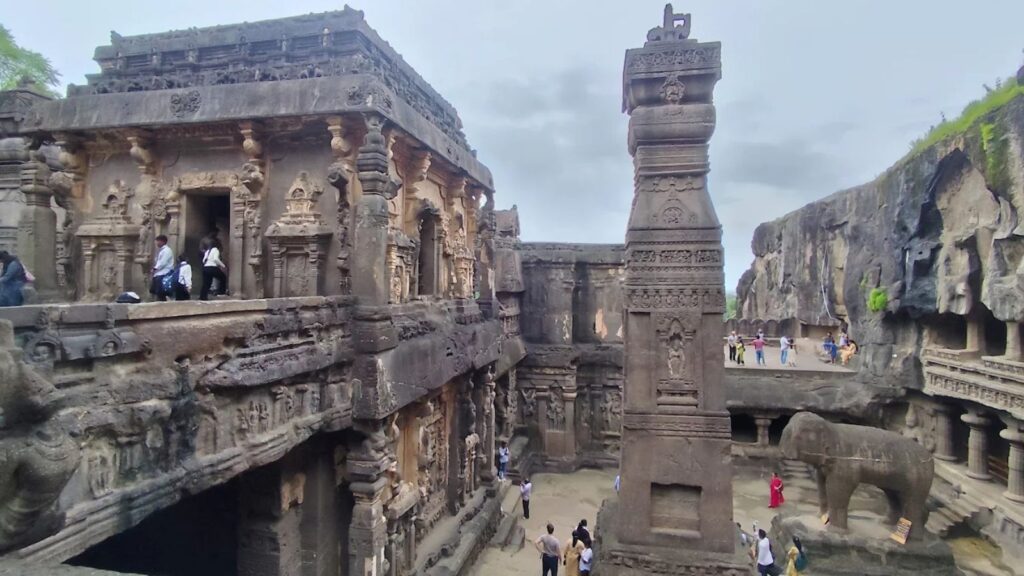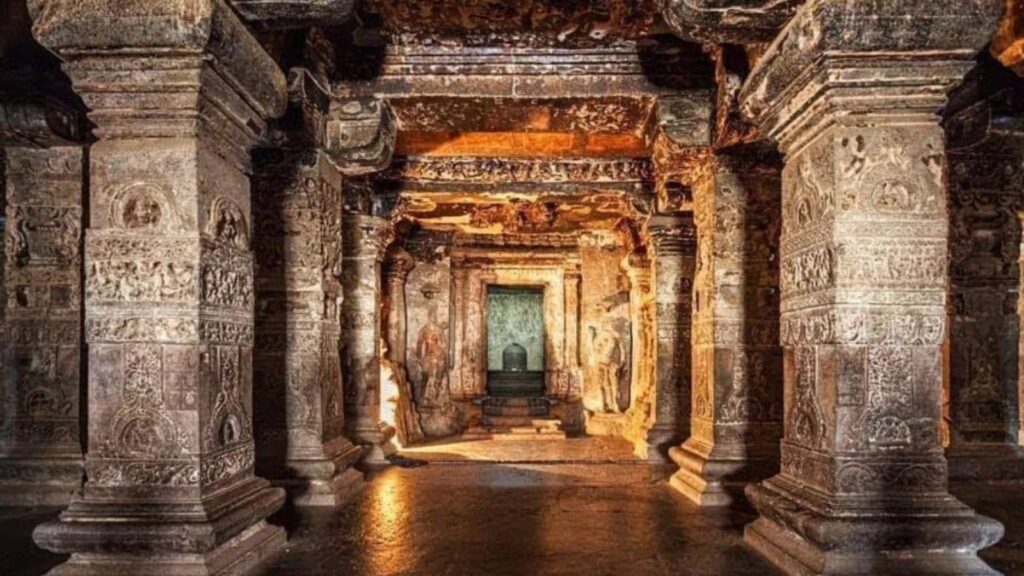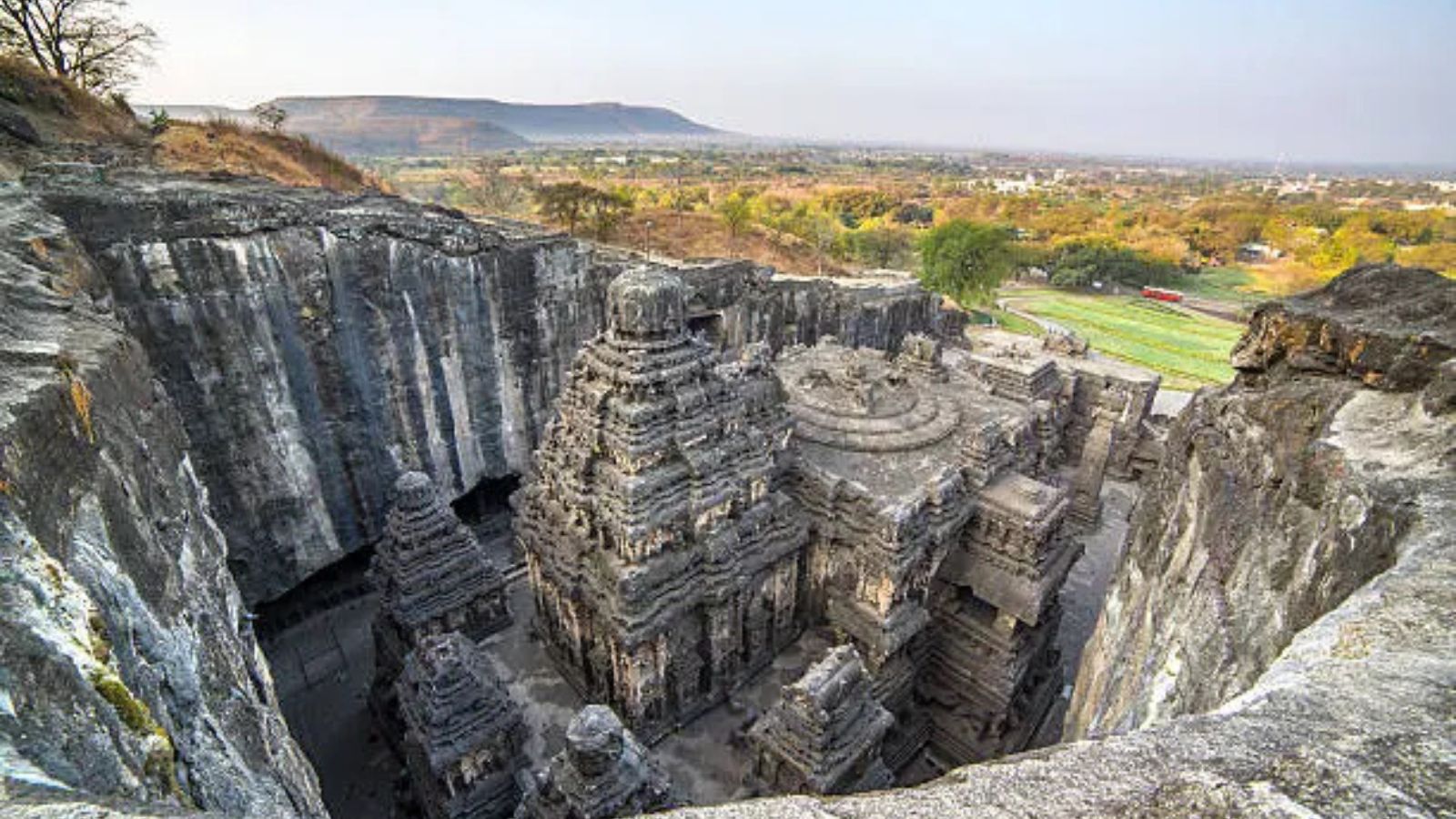The Kailasa Temple at Ellora in Maharashtra is one of the most extraordinary achievements of ancient Indian architecture. Designated as Cave 16 within the Ellora complex, a UNESCO World Heritage Site, this massive rock-cut shrine is dedicated to Lord Shiva.

What sets the temple apart is not only its scale but its unique method of construction: it was carved from a single block of basalt rock, excavated top-down. Instead of being built brick by brick, thousands of tons of rock were painstakingly removed to reveal a freestanding temple complete with gateways, courtyards, pillared halls, shrines, and intricate sculptures.
Commissioned in the 8th century CE by the Rashtrakuta king Krishna I, the temple was intended to replicate Mount Kailasa, the mythic abode of Lord Shiva. Its sheer size—measuring about 33 meters wide, 81 meters long, and 30 meters high—makes it the largest monolithic rock excavation in the world. The structure depicts episodes from Hindu epics such as the Ramayana and Mahabharata, while its towering shikhara soars above, symbolizing divine ascent.

A fascinating medieval Marathi legend, preserved in the Katha-Kalpataru (a medieval Sanskrit anthology of stories) adds a human dimension to this architectural marvel. As the story goes, the king fell seriously ill and, upon being cured by Lord Shiva’s blessing, his queen vowed to fast until she could see the temple’s completed shikhara. The architect, Kokasa, ingeniously began carving from the top so that the spire could be finished quickly, allowing the queen to break her fast. While historians view this as myth, the tale captures the temple’s unique design and the devotion it embodies.



